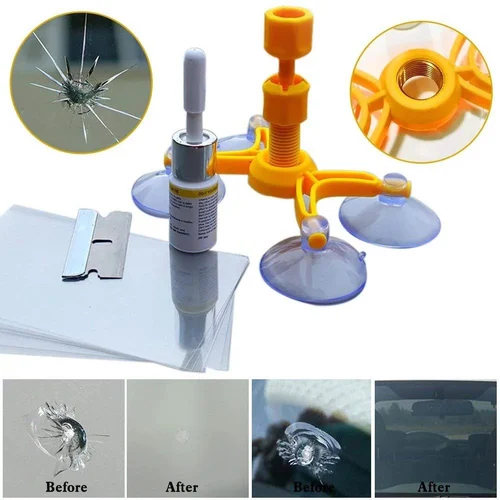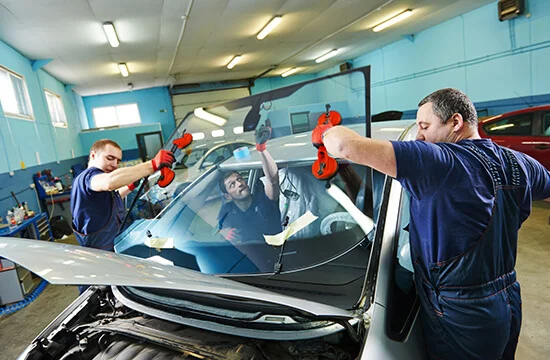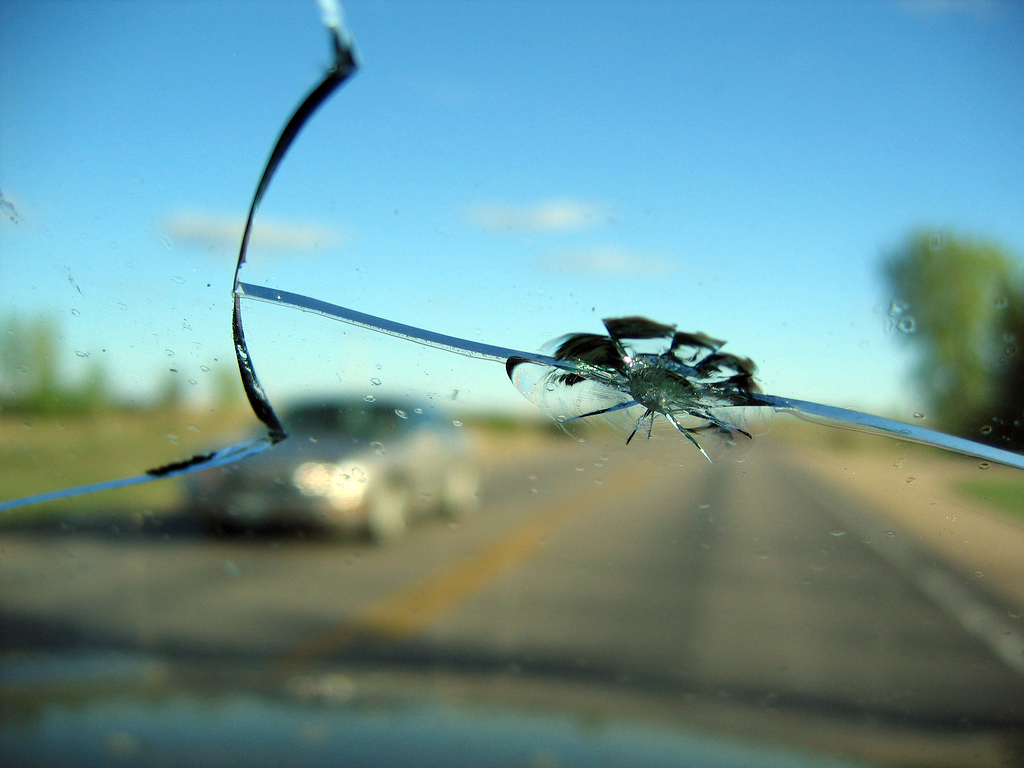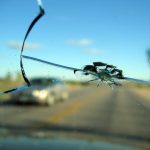A car’s windshield is a critical safety component for any vehicle on the road. But for vehicle owners everywhere, cracked or chipped windshields are a common problem. Whether it’s a small chip from a stray rock or a significant crack from a collision, damage to your windshield can compromise both the structural integrity of your vehicle and your safety on the road.
In this article, we’ll be exploring effective strategies for tackling chipped or cracked windshields. We’ll also discuss various repair options available to address different types and severities of damage, including DIY methods and professional services. By understanding the importance of addressing windshield damage promptly and learning how to navigate the repair process effectively, readers will be equipped to maintain the safety and longevity of their vehicles.
Step 1: Assess The Damage
Chipped or cracked windshields aren’t just aesthetically displeasing, they can become safety risks if left unattended. Properly assessing the damage is the first step in determining the appropriate course of action.
Minor damages typically include small chips, cracks, or surface scratches that don’t penetrate the windshield’s inner layer. Often, these are repairable and don’t need to be replaced. Major damages, however, need to be replaced as they manifest as large cracks or chips that penetrate the entire thickness of the windshield or compromise its structural integrity.
By detecting these early, you can prevent further spread, save up on costs, and maintain your vehicle’s value.
Step 2: Use Temporary Fixes

Temporary fixes should only be used to prevent further damage and maintain visibility until a permanent repair or replacement can be performed. These solutions are often quick and easy to apply, making them convenient for temporary situations such as when you’re on a road trip or waiting for a scheduled appointment. There are many products and tools available for temporary windshield repairs. This includes,
- Windshield repair kits. These typically include resin or adhesive that can be applied to the damaged area using a syringe or applicator. The resin is then cured using UV light to create a temporary seal.
- Temporary sealing tape. Specialized tapes designed for temporary windshield repairs can be used to cover cracks and chips, preventing them from spreading and reducing the risk of further damage.
- Temporary windshield repair compounds. Some compounds are formulated specifically for temporary repairs and can be applied to the damaged area to temporarily fill in cracks and chips.
- Common household items. If it’s an emergency, items like clear nail polish or super glue can be used as a temporary solution to seal small chips or cracks.
You can save money and DIY the process by using temporary fixes since all are quite easy to do. With these temporary fixes, you can also provide yourself with immediate protection and prevent further damage and improve your visibility after the damage occurs.
The only downside is that these temporary fixes are not as durable as long-term fixes, especially if exposed to harsh weather environments, they could affect visibility and may leave a slight haze or residue on the windshield, and they aren’t suitable for all types of damage as they are more suitable for small chips and cracks.
Step 3: Hire Professional Repair Services

DIY methods may be quick and easy, but cracked windshields may be challenging if you’ve never done repairs on them before. At this point, seeking professional repair services for chipped or cracked windshields may offer better benefits.
- Expertise: who better than an actual expert to fix your windshield? Auto glass repair technicians like us are trained and experienced in repairing various types of windshield damage, ensuring that the repair is done correctly and effectively.
- Quality materials: as expected, professional repair shops are knowledgeable regarding which high-quality materials and equipment to use when performing repairs. This results in a more durable and long-lasting solution compared to DIY methods.
- Comprehensive assessment: professionals can accurately assess the extent of the damage and determine whether repair or replacement is necessary. They can also identify any underlying issues that may affect the windshield’s integrity.
- Warranty coverage: many professional repair shops offer warranty coverage for their services. This will give you peace of mind and protection against future issues related to the repair.
Step 4: Know When to Consider Windshield Replacement
Replacement becomes necessary when windshield damage is severe enough that repairs are impractical and ineffective. Consider replacement when your windshield:
Has large cracks. If these cracks are longer than a few inches or extend across the windshield, they may compromise your car’s structural integrity and visibility.
Has damaged edges. Damage near the windshield’s edges can weaken the seal between the glass and the vehicle, increasing the risk of leaks and further damage.
Has a damaged inner layer. If the damage has penetrated through both layers of the windshield glass, repair may not be sufficient to restore its strength and integrity.
Windshield replacement services typically cost more than repairs since additional materials and labour are involved. On average, replacements can cost anywhere between $200 and $500 or more, depending on factors like the make and model of the vehicle, the type of glass used, and any additional features like tinting or rain sensors.
Step 5: Take Preventive Measures
Once repairs or replacements have been done, you’ll have to make sure to take preventive measures to keep your windshield from gaining additional damage even before it heals from the previous one. Here are some tips to prevent future windshield damage.
- Maintain a safe distance from other vehicles. Keep an adequate distance from the vehicle in front of you to reduce the risk of debris kicked up by them on the road.
- Avoid rough roads. Rough and unpaved roads can produce pebbles and debris that can hit your windshield, increasing the likelihood of damage to your windshield.
- Park in a sheltered area. Whenever you can, park in a garage or sheltered area to protect it from falling objects like tree branches, hail, or other debris.
- Promptly repair minor damage. If you notice any chips or cracks on your windshield, promptly address them before they have a chance to worsen.
- Replace worn wiper blades. Worn or damaged wiper blades can scratch your windshield, reducing your road visibility. So replace them regularly to maintain clear visibility and prevent damage.
- Keep your windshield clean. Cleanliness will always save you from damage. Regularly clean out grime, dirt, and debris on your windshield.
- Avoid extreme temperature changes. Sudden temperature changes like blasting hot air on a cold windshield, can cause stress cracks. Make sure to gradually warm up or cool down your vehicle first before making drastic temperature changes.



